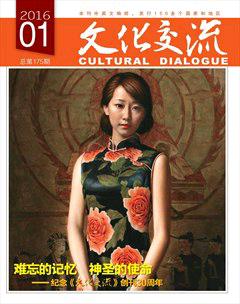Lu Yanshao: Master of Traditional Chinese Landscape
2016-03-25ByYuYu
By Yu Yu
Lu Yanshao: Master of Traditional Chinese Landscape
By Yu Yu
Lu Yanshao (1909-1993) was a master of landscape in a traditional Chinese style. Art historians agree that he is an accomplished master in the field. He absorbed techniques of masters of the past in an all-round way. On the basis of his knowledge of the past, he was incredibly innovative while most people thought all possibilities about landscape painting had long been explored and exhausted. He invented two unique skills and developed a new vocabulary for expression. He is a big chapter of the history of modern-time Chinese painting.
Mountains and Rivers of Our Country, a huge painting he created in 1978, is considered a masterpiece that shows his understanding of Chinese landscape painting. It is 231 centimeters tall and 670 centimeters long. The opus shows off the special ways the master painted trees, rocks, clouds and water. His ink techniques, brushwork and coloration are elaborate and masterful. His artistic conception, style, rhythm are well expressed in the painting. It is a perfect il-lustration of the ancient Chinese philosophy which aims to explore the secrets of nature and man and understand the changes of yesteryears and the present. It is the very best of his works in his most creative years.
His national influence can be seen in Lu Yanshao Prize, which was first issued in the spring of 2015. The winners this year included 2 gold medals, 3 silver medals, 7 bronze medals and 20 awards of excellence. It is the first national painting prize in the name of Zhejiang. Zhejiang Academy of Traditional Painting acts as artistic director for final choices. The academy plays a big role also because Lu was its first president when it was founded in 1984.
During Lu's lifetime, he lived and worked in Beijing, Shanghai and Hangzhou. A scholar comments, while Pan Tianshou (1897-1971) served as the president of Zhejiang Academy of Fine Arts (the predecessor of the present-day China Academy of Art), the academy was celebrated for students good at painting flower and birds;while Zhou Changgu (1929-1985) taught at the academy, figure painting was prominent in China;while Lu Yanshao taught there from 1980 to 1989, the academy was celebrated for its landscape painting.

陆俨少画作《雁荡秋色图》A painting by Lu Yanshao

1984年,陆俨少为浙江画院的题词An inscription by Lu Yanshao for Zhejiang Academy of Traditional Painting

上图 陆俨少与夫人在浙江金华方岩;下图 陆俨少在浙江诸暨五泄景区。Top: Lu Yanshao and his wife visit Jinhua, Zhejiang; above: Lu Yanshao visits Wuxie, a scenic zone in Zhuji, Zhejiang.
His innovation came from his profound understanding of literature, calligraphy, and art theories. He is regarded as a leading scholarly painter of the contemporary Chinese painting. Lu Yanshao, Zhang Daqian, Fu Baoshi and Li Keran are widely considered four masters of landscape painting of the 20th-century China.
Lu Yanshao left Hangzhou for Shenzhen in 1989. He passed away in Shenzhen in 1993.
Lu was a native of Jiading, now a suburban district of Shanghai. Lu Yanshao Art Museum is situated in Jiading. I visited the museum on a cool summer weekend in 2015. On the granite doorway is an inscription in the handwriting of Sha Menghai. The 4,330-m2 courtyard is a Chinese garden with decorative rockery, a zigzagging corridor, a zigzagging bridge, and a pond, suggesting scholarly qualities and dreams. The two-storey main building displays Lu's works. On the second floor is a replica of Lu's last studio. Many objects from the studio are on display. Visitors can see where Lu worked in the last years of his life. Also on the second floor is a 100-m2 conference room for academic symposiums. Also in the garden is a building designed to hold training courses, parties, and small exhibitions. In the garden is a 47-meter-long zigzagging corridor where visitors can see 30 plus calligraphy pieces of the master carved on the wall.
